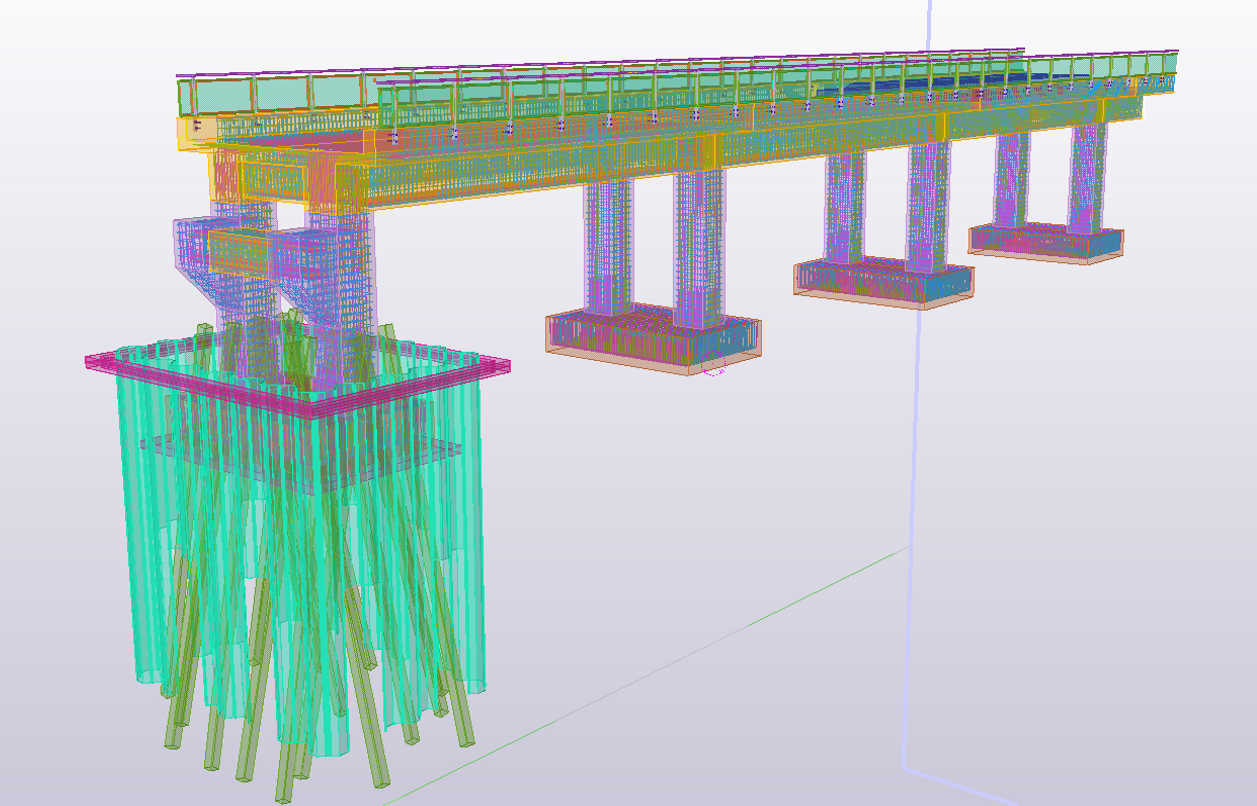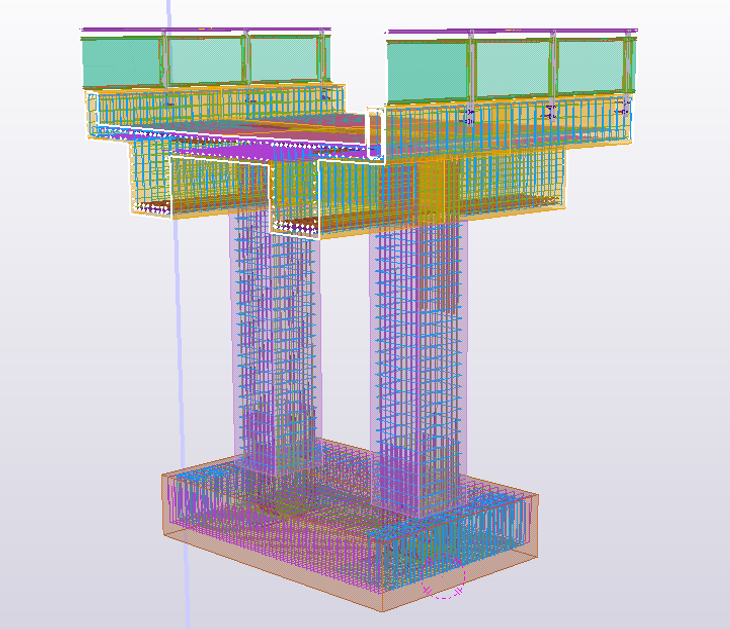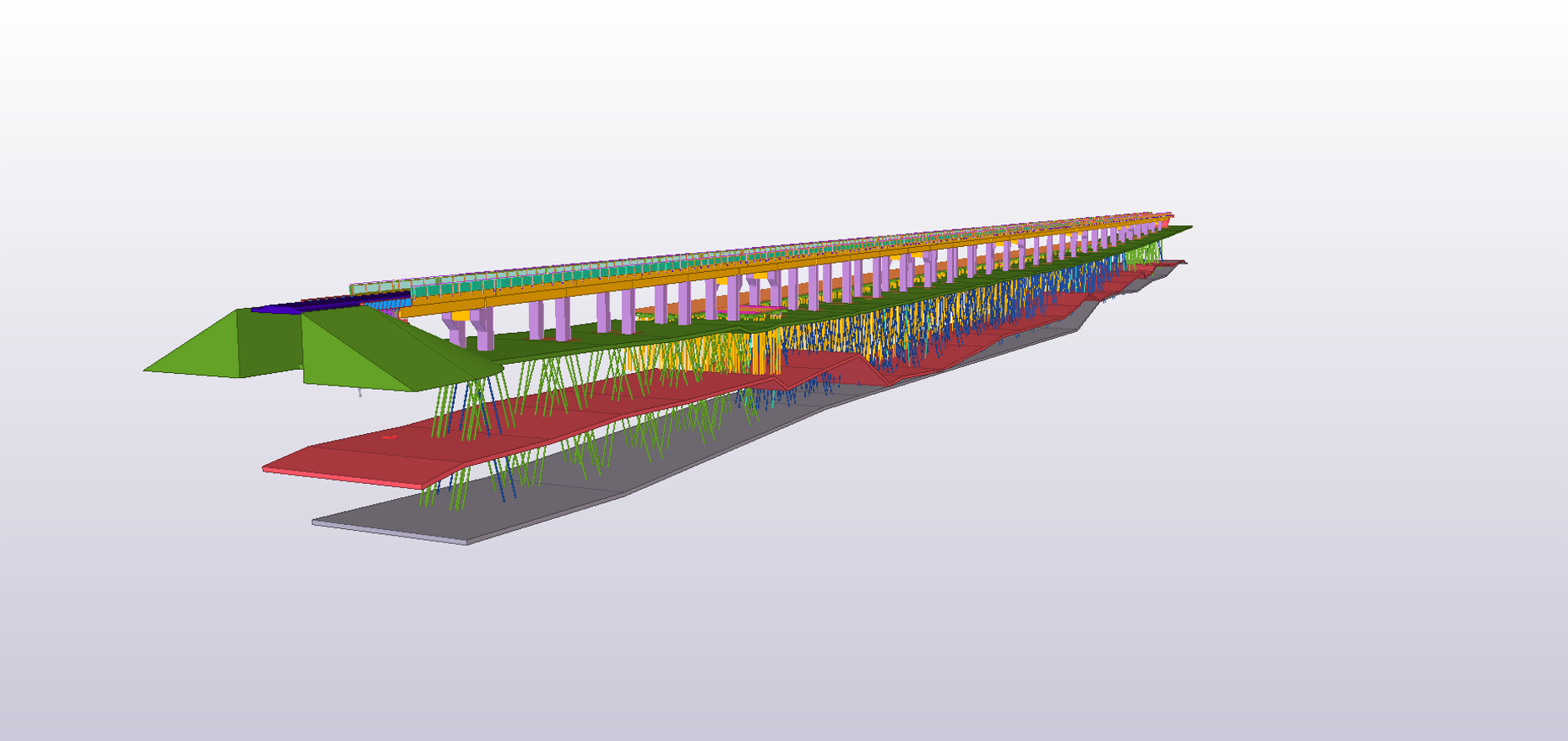Collaboration and Innovation in Focus
With Trafikverket as the client, Inhouse Tech is contributing as a subcontractor to Kreera, in collaboration with AWER, responsible for geotechnics. The project team from Inhouse Tech includes employees from several departments:
· Project Manager: Fredrik Thunström
· Designer: Rickard Caster, Samuel Wiik
· Design Manager: Max Fredriksson
· 3D Modelling: David Sandberg, Robert Lorentzon
The Land Bridge Concept – A New Solution for Sweden
This bridge project is part of a land bridge concept being tested for the first time in Sweden. A land bridge, also known as a viaduct or landscape bridge, carries the railway through the landscape without necessarily crossing a major obstacle. Traditionally in Sweden, railways are built on embankments, except when crossing obstacles such as watercourses, where bridges are built. Land bridges are already widely used in Japan, which has been a significant influence on this project. The land bridge concept is based on sequential repetition where a main section is optimized to be repeated span after span. The sections are connected with link bridges to control the bridge's direction in plan and profile.

Tjärnbäcksbron's Construction
Tjärnbäcksbron's main section consists of four spans of 15 meters each, giving a total length of 60 meters per section. Each section thus has five supports, all of which are pile-founded. The standardization and repetition of the sections contribute to faster construction time and less need for special adaptations to the surroundings. The land bridge concept is advantageous compared to constructing high embankments and retaining walls, among other things, because the landscape can pass freely under the bridge.
An interesting detail is the challenging geological conditions along the bridge's route. The clay has very low shear strength, which has been a challenge. To access the site with drilling equipment and take samples, the ground must be frozen. This has meant that the geotechnical investigations have been ongoing for several years and had to be halted when the frost thawed.
In the project, both the bridge construction and the reinforcement have been modelled in 3D. The bridge designers have been assisted by Inhouse Tech's industrial department, which has extensive experience in this area. The project has provided new insights into 3D reinforcement and its adaptation to Trafikverket's requirements.

Background and Future
The history of this project dates to around 2017/2018 when Inhouse Tech was commissioned to conduct a study on how to reduce the cost of bridge constructions for high-speed railways. The concept of land bridges, influenced by how they have been built in Japan since the 1960s, was already discussed then. The geotechnical conditions between Sweden and Japan are relatively similar concerning clay meeting rock.
In the initial phase, it was investigated how Swedish standards could be applied to the Japanese land bridge concept. At that stage, a double-track bridge was studied, while Tjärnbäcksbron on Norrbotniabanan is single-track. Inhouse Tech has also been tasked with investigating how to develop a parameterized model for the concept and has worked with generative design for such concepts, which could further streamline, optimize, and reduce costs.
It is exciting to be part of a new concept being tested in Sweden!
For more information about the project or our bridge construction services, contact us at Inhouse Tech!
